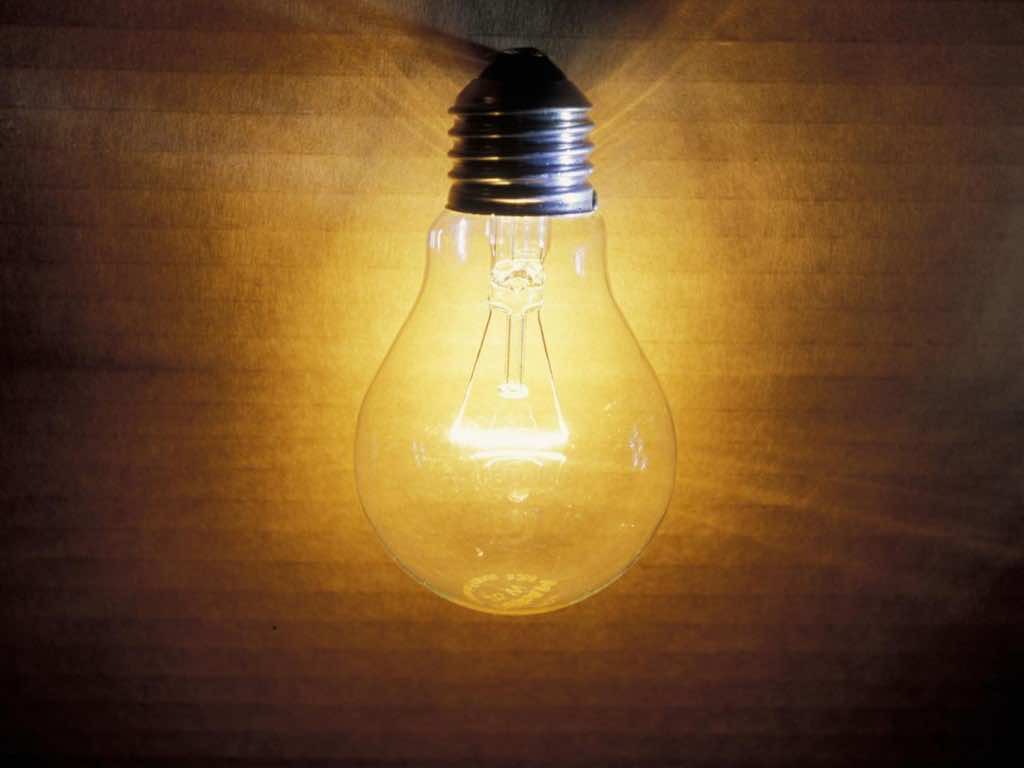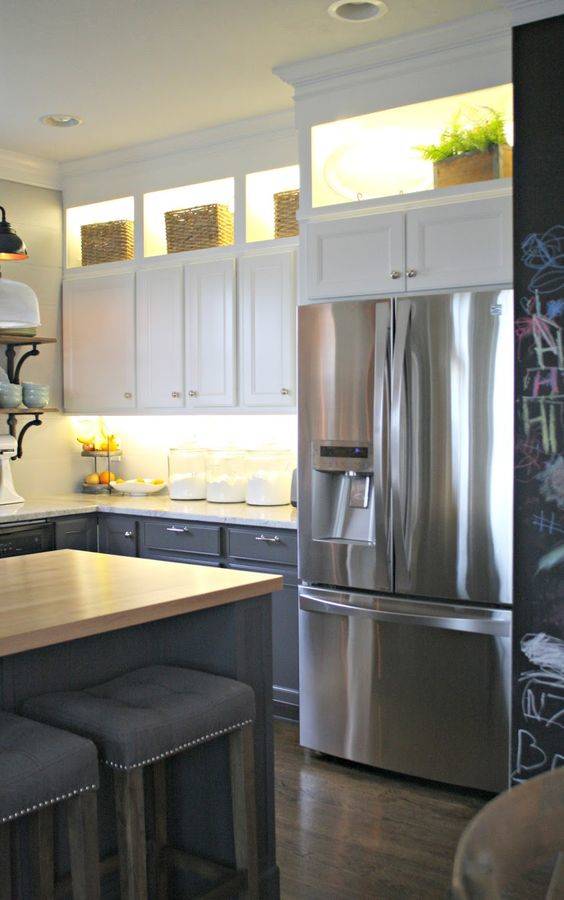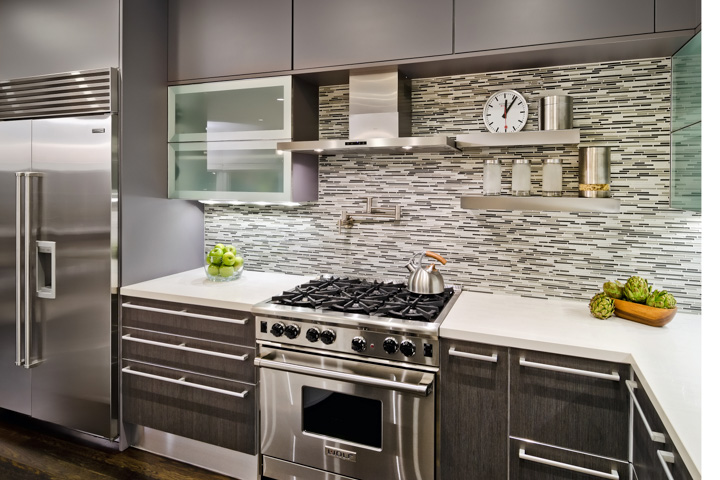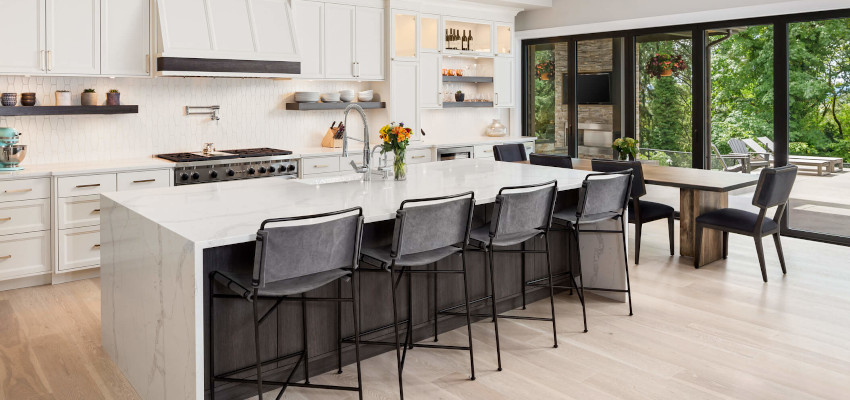LED bulbs are a popular choice for kitchen lighting due to their energy efficiency and long lifespan. These bulbs use light-emitting diodes to produce light, making them more durable and longer lasting than traditional bulbs. They are also environmentally friendly as they do not contain harmful chemicals like mercury. LED bulbs come in a variety of colors and can be dimmed for customizable lighting options in the kitchen.1. LED Bulbs
Compact fluorescent (CFL) bulbs are another energy-efficient option for kitchen lighting. These bulbs use curly or spiral-shaped tubes to produce light and are known for their long lifespan. CFL bulbs are also cost-effective as they use less energy and have a longer lifespan than traditional bulbs. They are available in a variety of sizes and colors, making them a versatile choice for kitchen lighting.2. CFL Bulbs
Halogen bulbs are a type of incandescent bulb that use halogen gas to produce light. They are known for their bright, white light and can be used in a variety of kitchen lighting fixtures. While they are not as energy-efficient as LED or CFL bulbs, they do produce a crisp, clear light that is ideal for task lighting in the kitchen.3. Halogen Bulbs
Traditional incandescent bulbs are widely used in kitchens for their warm, inviting light. However, they are not the most energy-efficient option and have a shorter lifespan than other types of bulbs. Incandescent bulbs produce light by heating a filament inside the bulb, making them less durable than other types of bulbs. They are still a popular choice for kitchens due to their familiar glow and affordability.4. Incandescent Bulbs
Installing dimmer switches in the kitchen allows for customizable lighting options and can help save energy. These switches allow you to adjust the brightness of the lights, making it easy to create the perfect ambiance for any occasion. Dimmer switches are compatible with a variety of bulbs and are a great addition to any kitchen lighting setup.5. Dimmer Switches
Energy Star certified lighting is a great option for those looking to save energy and reduce their utility bills. These bulbs are highly energy-efficient and use up to 90% less energy than traditional bulbs. They also have a longer lifespan, making them a cost-effective choice for kitchen lighting. Look for the Energy Star label when purchasing bulbs for your kitchen.6. Energy Star Certified Lighting
Task lighting is essential in the kitchen for completing various tasks such as cooking, cleaning, and food prep. This type of lighting is bright and focused, providing optimal lighting for specific areas. Under cabinet lights and pendant lights are popular choices for task lighting in the kitchen.7. Task Lighting
Under cabinet lighting is a popular choice for task lighting in the kitchen. These lights are installed underneath cabinets and provide direct, focused light on countertops and workspaces. They come in a variety of styles and can be easily installed in any kitchen.8. Under Cabinet Lighting
Pendant lighting is a stylish and functional option for kitchen lighting. These lights hang from the ceiling and provide direct, focused light on specific areas in the kitchen, such as over an island or dining table. They come in a variety of designs and can add a touch of personality to any kitchen.9. Pendant Lighting
Track lighting is a versatile option for kitchen lighting as it allows you to direct light in multiple directions. This type of lighting is installed on a track that can be adjusted to point in different directions, making it ideal for highlighting specific areas in the kitchen. Track lighting is available in various styles and is a great choice for modern kitchens.10. Track Lighting
The Importance of Choosing the Right Wattage for Kitchen Lighting

Why Wattage Matters
 When it comes to designing your dream kitchen, lighting is often an overlooked element. However, choosing the right
wattage
for your kitchen lighting is crucial for both functionality and aesthetics. The
watts
of your light source directly affect the
brightness
of your space, which can greatly impact the overall mood and atmosphere of your kitchen.
When it comes to designing your dream kitchen, lighting is often an overlooked element. However, choosing the right
wattage
for your kitchen lighting is crucial for both functionality and aesthetics. The
watts
of your light source directly affect the
brightness
of your space, which can greatly impact the overall mood and atmosphere of your kitchen.
Functionality and Safety
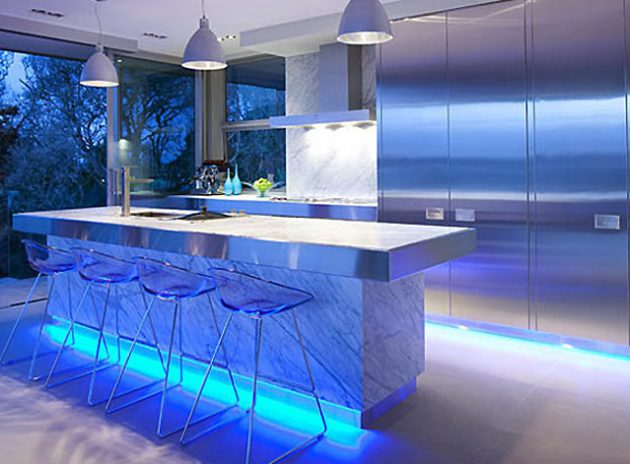 The kitchen is not only a place for cooking and preparing meals, but it is also a space for socializing and entertaining. This makes proper lighting a necessity for functionality and safety.
Watts
play a key role in ensuring that your kitchen is well-lit and safe for all your activities. A poorly lit kitchen can lead to accidents and make tasks such as chopping and cooking more difficult. Moreover, choosing the right
wattage
can also help reduce eye strain and fatigue, making your time spent in the kitchen more enjoyable.
The kitchen is not only a place for cooking and preparing meals, but it is also a space for socializing and entertaining. This makes proper lighting a necessity for functionality and safety.
Watts
play a key role in ensuring that your kitchen is well-lit and safe for all your activities. A poorly lit kitchen can lead to accidents and make tasks such as chopping and cooking more difficult. Moreover, choosing the right
wattage
can also help reduce eye strain and fatigue, making your time spent in the kitchen more enjoyable.
Creating the Perfect Ambiance
 Aside from functionality and safety, the right
wattage
can also help you create the perfect ambiance for your kitchen. Whether you want a bright and energizing space for morning coffee or a cozy and intimate atmosphere for dinner parties, the
wattage
of your lighting can make all the difference.
Higher wattage
bulbs can provide a brighter and more vibrant feel, while
lower wattage
bulbs can create a softer and more relaxed ambiance. It's important to consider the purpose of each area in your kitchen and choose the
wattage
accordingly.
Aside from functionality and safety, the right
wattage
can also help you create the perfect ambiance for your kitchen. Whether you want a bright and energizing space for morning coffee or a cozy and intimate atmosphere for dinner parties, the
wattage
of your lighting can make all the difference.
Higher wattage
bulbs can provide a brighter and more vibrant feel, while
lower wattage
bulbs can create a softer and more relaxed ambiance. It's important to consider the purpose of each area in your kitchen and choose the
wattage
accordingly.
Choosing the Right Wattage for Different Types of Lighting
 When it comes to kitchen lighting, it's not a one-size-fits-all approach. Different types of lighting require different
wattage
to achieve their desired effect. For example, task lighting, such as under cabinet or pendant lights, should have a higher
wattage
to ensure proper visibility for cooking and food preparation. On the other hand, ambient lighting, such as recessed or track lighting, can have a lower
wattage
to create a more relaxed atmosphere. It's essential to consider the purpose of each type of lighting and choose the appropriate
wattage
to achieve your desired look and function.
When it comes to kitchen lighting, it's not a one-size-fits-all approach. Different types of lighting require different
wattage
to achieve their desired effect. For example, task lighting, such as under cabinet or pendant lights, should have a higher
wattage
to ensure proper visibility for cooking and food preparation. On the other hand, ambient lighting, such as recessed or track lighting, can have a lower
wattage
to create a more relaxed atmosphere. It's essential to consider the purpose of each type of lighting and choose the appropriate
wattage
to achieve your desired look and function.
Final Thoughts
 In conclusion,
wattage
plays a crucial role in the overall design and functionality of your kitchen lighting. It's important to carefully consider the purpose of each area and type of lighting and choose the appropriate
wattage
to achieve your desired results. Whether you want a bright and functional space or a cozy and intimate atmosphere, the right
wattage
can help you achieve your dream kitchen. So next time you're choosing your kitchen lighting, remember the importance of
wattage
and its impact on your space.
In conclusion,
wattage
plays a crucial role in the overall design and functionality of your kitchen lighting. It's important to carefully consider the purpose of each area and type of lighting and choose the appropriate
wattage
to achieve your desired results. Whether you want a bright and functional space or a cozy and intimate atmosphere, the right
wattage
can help you achieve your dream kitchen. So next time you're choosing your kitchen lighting, remember the importance of
wattage
and its impact on your space.


.jpg)





































